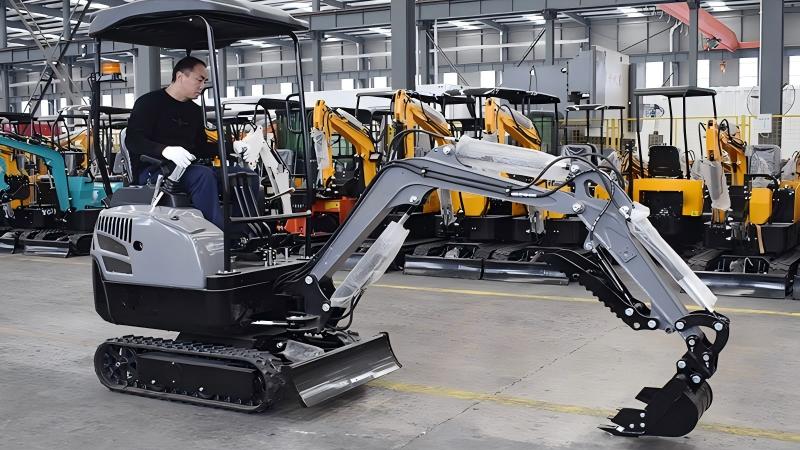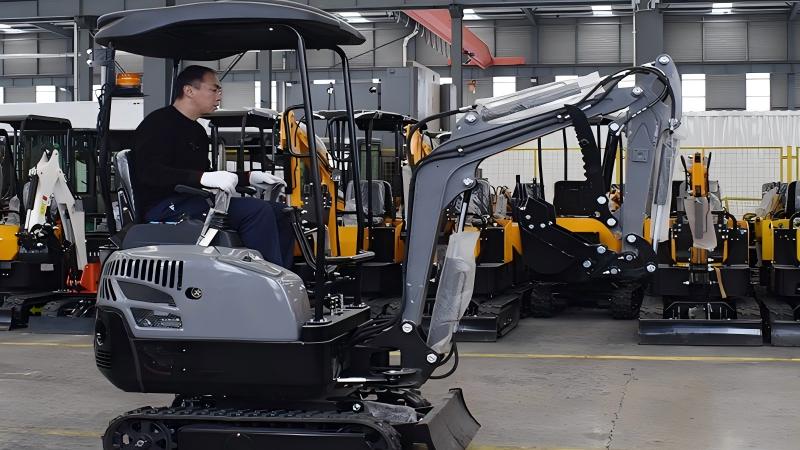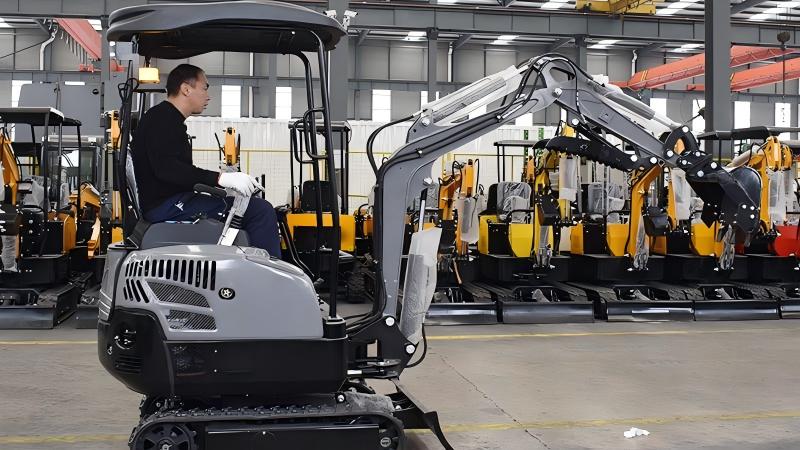In the world of construction, landscaping, and utility work, selecting the right piece of equipment is paramount to efficiency, cost-effectiveness, and project success. Two of the most commonly encountered machines, often confused by the uninitiated, are the mini excavator and the backhoe. While both are designed for digging and moving earth, they possess distinct characteristics, capabilities, and ideal applications. Understanding these differences is crucial for anyone involved in equipment rental, purchasing, or project planning.
This article will delve into the fundamental distinctions between mini excavators and backhoes, exploring their design, functionality, performance, and optimal use cases to help clarify which machine is best suited for various tasks.
Defining the Machines
Before diving into the comparisons, let's establish a clear definition for each:
Mini Excavator (Compact Excavator): A mini excavator is a compact, tracked or wheeled excavation machine, characterized by its independent boom swing and a cab that can rotate 360 degrees. Its primary function is digging, trenching, and light demolition, featuring a single digging arm with a bucket at the end. Mini excavators are designed for agility and precision in confined spaces. They typically weigh under 6 metric tons (around 13,000 lbs), though some larger compact models may push this boundary.
Backhoe Loader (Backhoe): A backhoe loader, commonly referred to simply as a backhoe, is a versatile piece of heavy equipment that combines the functions of two machines: a loader at the front and a backhoe (excavator arm) at the rear. It is mounted on a tractor-like chassis, usually with large, pneumatic tires, making it highly mobile on various terrains. The operator's seat typically swivels to face either the loader or the backhoe attachment. Backhoes are known for their multitasking capabilities.
Key Differences: A Detailed Breakdown
The distinctions between these two machines can be broken down into several core areas:
Design and Configuration:
Mini Excavator: Primarily a digging machine. Its defining feature is the 360-degree slew (rotation) of the upper structure (cab and boom). This allows it to dig and dump material anywhere within its radius without repositioning the tracks. The boom also has an independent swing feature, allowing it to dig offset from the tracks. Most mini excavators are tracked, providing better flotation and stability on soft or uneven terrain, though wheeled versions exist for road travel.
Backhoe Loader: A hybrid machine. It has a fixed chassis that drives like a tractor. The front end is equipped with a loader bucket for scooping, pushing, and carrying material. The rear end features a digging arm (backhoe) that is pivotally mounted and typically has a limited swing arc (around 180-200 degrees). To dig and dump, the entire machine often needs to be repositioned or its outriggers deployed for stability.
Mobility and Transportation:
Mini Excavator: Being compact, they are relatively easy to transport. Most models can be hauled by a standard pickup truck with a suitable trailer, eliminating the need for specialized heavy haulage. On-site, tracked mini excavators are slower but offer excellent traction and low ground pressure.
Backhoe Loader: Highly mobile on job sites and can travel at reasonable speeds on public roads (often without requiring a lowboy trailer, unlike larger excavators). This self-transport capability is a significant advantage for jobs spread across different locations or where frequent repositioning is required. However, their larger size means they require a larger trailer if transporting long distances.
Primary Functionality and Versatility:
Mini Excavator: Specialized in excavation. Its 360-degree rotation and independent boom swing make it exceptionally efficient for digging trenches, foundations, and holes in tight spaces. Its compact size allows it to access areas where larger machinery cannot. They excel at precision digging and often come with a wide array of attachments (augers, hydraulic hammers, grapples, thumbs).
Backhoe Loader: A multi-purpose machine. Its front loader makes it ideal for backfilling, grading, pushing material, and loading trucks. The rear backhoe is excellent for digging trenches, utility work, and minor excavations. This dual functionality makes it highly versatile for general construction tasks, often eliminating the need for two separate machines.
Digging Performance and Depth:
Mini Excavator: Offers superior digging precision and maneuverability in confined areas. While their digging depth is less than full-sized excavators, larger mini excavators can still reach impressive depths. The ability to offset dig (dig parallel to walls) is a unique advantage.
Backhoe Loader: Generally offers greater digging depth and reach than a similarly sized mini excavator, especially with an extendable stick (dipper). However, their limited swing radius means they often need to reposition the entire machine more frequently when digging and dumping over a wider area.
Work Environment:
Mini Excavator: Flourishes in tight, confined spaces such as urban construction sites, residential backyards, indoor demolition, and landscaping projects where maneuverability is critical. Its tracks distribute weight evenly, making it suitable for softer ground with minimal turf damage.
Backhoe Loader: Excels in open or semi-open environments where both digging and material handling are required. Its tire mobility makes it suitable for paved surfaces and harder ground, though it can still operate off-road. It's a common sight on road construction, utility installation, and general site preparation.
Operator Skill and Comfort:
Mini Excavator: Operating a mini excavator requires mastering coordinated movements of multiple hydraulic functions. The 360-degree rotation can be intuitive once learned.
Backhoe Loader: Operators must be proficient in switching between loader and backhoe operations, often requiring a swivel seat. The controls for the loader and backhoe are distinct. Many operators find the linear movement of a backhoe (digging in front of the machine) more straightforward for trenching than a rotating excavator.
Cost and Ownership:
Mini Excavator: Generally has a lower purchase price and lower operating costs (fuel, maintenance) than a backhoe due to its smaller size and simpler design (focused primarily on digging).
Backhoe Loader: Has a higher initial cost due to its dual functionality and more complex design. However, it can offer better overall value if a project genuinely requires both loading and digging capabilities, as it negates the need for two separate machines (e.g., a skid steer and a mini excavator).
When to Choose Which?
Choose a Mini Excavator when:
Working in extremely tight or confined spaces (e.g., urban backyards, inside buildings).
Precision digging, trenching, or utility work where accuracy is paramount.
Landscaping, pool installation, or irrigation projects.
Demolition of small structures.
Minimal ground disturbance is required (tracked models).
Transporting the machine easily is a priority.
Choose a Backhoe Loader when:
A versatile machine capable of both digging and loading/backfilling is needed.
The job site requires frequent travel between work areas on firm ground or public roads.
General construction, roadwork, or large-scale utility projects.
There's a need to move large quantities of material (with the front loader).
Cost-effectiveness by having one machine do the job of two is desirable.
Conclusion
While both mini excavators and backhoe loaders are indispensable tools for earthmoving, they are fundamentally different machines designed for distinct purposes. The mini excavator is a specialized digging powerhouse for confined spaces, prioritizing precision and maneuverability. The backhoe loader, on the other hand, is a versatile workhorse, offering a compelling blend of digging, loading, and on-road mobility.
Understanding their core differences in design, functionality, and optimal use cases empowers contractors and project managers to make informed decisions, ensuring the right machine is deployed for the right job, leading to enhanced productivity, reduced costs, and successful project outcomes.
Post time:Sep-25-2020



